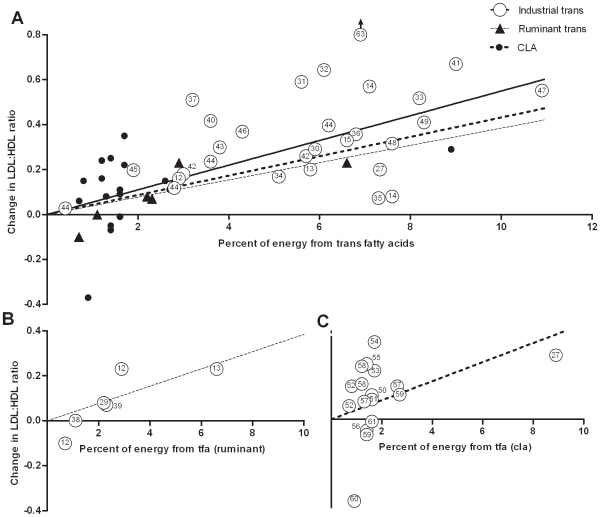Figure 3. Results of randomized studies of the effects of diets high in industrial trans fatty acids (---○○○○○ ---) or ruminant trans fatty acids (····▴····) or CLA (▪▪▪•▪▪▪) compared with cis-unsaturated fatty acids on the ratio of LDL- tot HDL-cholesterol.
a: Results of all studies on the ratio of LDL- to HDL-cholesterol. Results of studies using saturated fatty acids as comparison group [14], [15], [30], [31], [37], [38], [41], [49], [60], [61] and of the Transfact study[13], which compared two sources of trans fatty acids were recalculated to effects relative to isocaloric amounts of cis mono-unsaturated fatty acids according to Mensink et al. [26]. To maintain uniformity, we calculated the ratio of LDL to HDL cholesterol from mean LDL and HDL levels, even where ratios had been reported. Numbers indicate reference numbers. Point no. 63 was not included in estimating the regression line because we considered it an outlier. Regression lines were forced through the origin because a zero change in diet should produce a zero change in blood lipids. The black solid line indicates the best-fit regression for industrial trans fatty acids (y = 0.055x), the dashed line for ruminant trans fatty acids (y = 0.038x) and the grey line for CLA (y = 0.045x). The slopes of the regression lines were not significantly different. b: Results of randomized studies of the effects of diets high in ruminant trans fatty acids compared with cis-unsaturated fatty acids on the ratio of LDL- to HDL-cholesterol. Results of one study using saturated fatty acids as comparison group [38] and of the Transfact study, which compared two sources of trans fatty acids [13], were recalculated to effects relative to isocaloric amounts of cis mono-unsaturated fatty acids according to Mensink et al. [26]. To maintain uniformity, we calculated the ratio of LDL to HDL cholesterol from mean LDL and HDL levels, even where ratios had been reported. Numbers indicate reference numbers. c: Results of randomized studies of the effects of CLA compared with cis-unsaturated fatty acids on the ratio of LDL- to HDL-cholesterol. To maintain uniformity, we calculated the ratio of LDL to HDL cholesterol from mean LDL and HDL levels, even where ratios had been reported. Numbers indicate reference numbers. Results of two studies using placebo supplements with a high saturated fat content [60], [61]were recalculated to effects relative to isocaloric amounts of cis mono-unsaturated fatty acids according to Mensink et al. [26].

